'The Suicide Squad' Is Gory, Gratuitous, but Great
'The Suicide Squad' is at its best when it focuses on its characters and commentary on real-life issues, but stumbles when it relies too heavily on gratuitous gore and insensitive humor.


Encanto is Disney’s newest animated musical about the family Madrigal who live in the mountains of Colombia in a magical casita. Each family member receives a magical gift. However, everything isn’t as perfect as it seems. The protagonist Mirabel (Stephanie Beatriz) is the only Madrigal child without a gift. When she discovers the miracle is dying, Mirabel sets out to fix it and prove her worth to her family. Spoilers ahead!
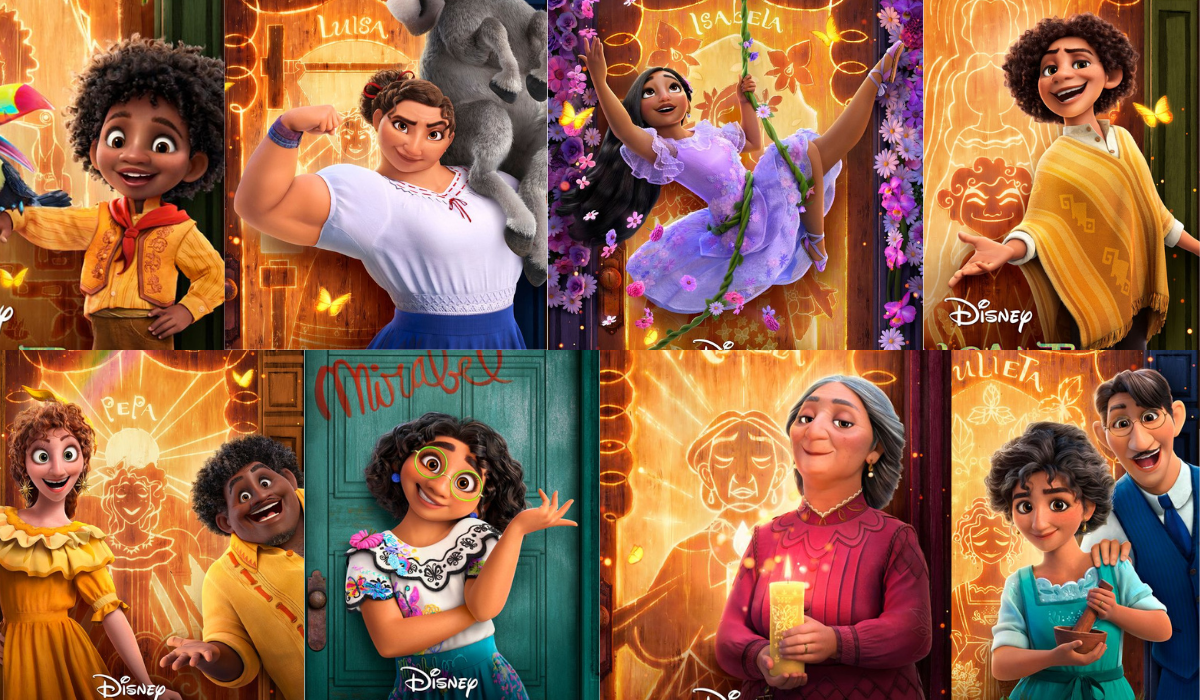
I loved Encanto, especially the ethnic and racial diversity. It’s the most I’ve ever seen in an animated movie. Skin tones range from the darkest of black to pale white, all within a single community of Colombians. It made me so happy to see such a colorful community and family like my own. Latine families are some of the most diverse because the Latine ethnicity is typically made up of a genetic combination of European, African, and Indigenous. The ratios of those races can vary, leading to a wide range of skin tones, eye colors, hair textures, etc. Latines can be white, black, and brown.
In the Madrigal family alone, all of these different skin tones and racial identities are represented. It’s amazing representation for Latines. Some family members are Afro-Latinos like Tío Félix (Mauro Castillo) and Antonio (Ravi Cabot-Conyers). Others are white like Tía Pepa (Carolina Gaitán) and Agustín (Wilmer Valderrama). Some have straight hair like Isabela (Diane Guerrero), while others have curly hair like Mirabel. And each and every one of them is beautiful. What’s more, this movie has body diversity. Every woman and man is shaped differently, the standout being Luisa (Jessica Darrow), the super buff, gorgeous older sister of Mirabel. (I think there could still be more body diversity, particularly among the women, since the animation still tends to make them skinny, but I digress.)
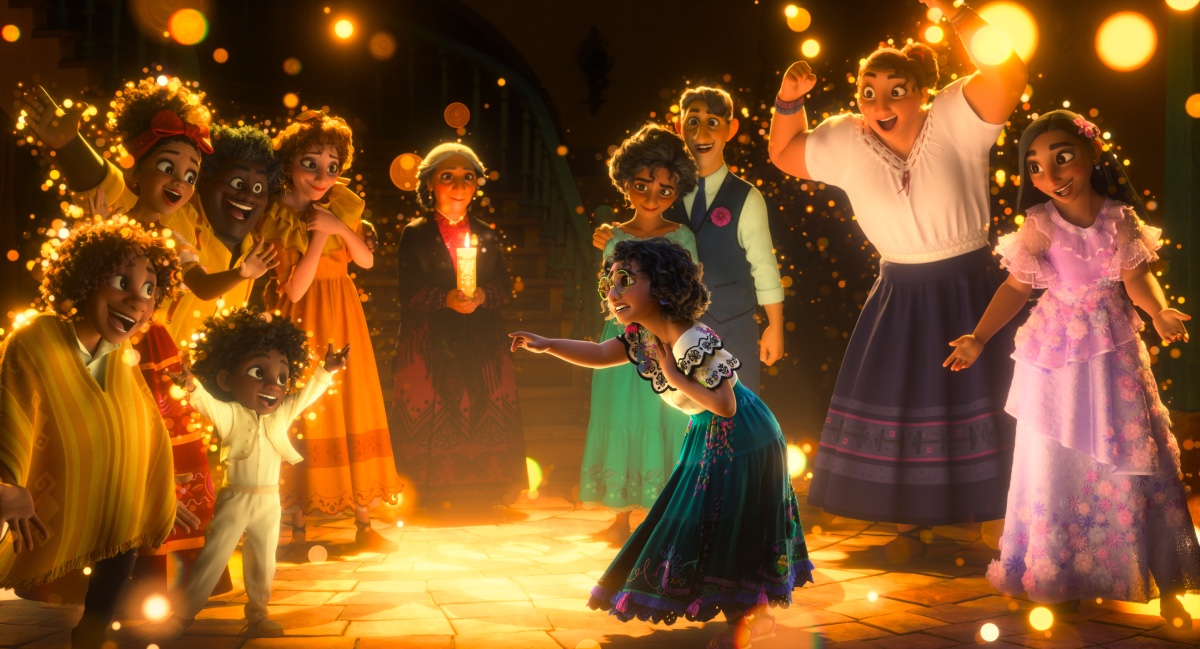
The music in Encanto gets better and better the more you listen to it. The animated musical sequences at first were a little jarring. In Mirabel’s song “Waiting on a Miracle” everything freezes, which I didn’t quite like because I wasn’t sure what was a fantasy versus what was Mirabel’s reality. Other musical sequences occasionally felt childish, however I understand that’s because I’m an adult, and this is still a Disney family film directed at kids.
While most songs aren’t instantly catchy, they’re all super fun to listen to! My top three favorites were “Surface Pressure,” “We Don’t Talk About Bruno,” and “Dos Oruguitas.” Luisa’s song “Surface Pressure” is a tribute to all elder sisters everywhere who’ve had to carry their family burdens. It’s very catchy, and Jessica Darrow gets to show off her amazing vocal range. Arguably the best song in the film is “We Don’t Talk About Bruno.” It puts Lin-Manuel Miranda’s talents on display, featuring a stacked verse in which all of the characters sing over each other, a staple of musical theatre and Miranda’s work.
The conflict at the heart of Encanto is intergenerational trauma. I was surprised this movie lacked a clear-cut villain, but in the end I appreciated this. The real villain is the cycle of victimization inflicted on Abuela Alma (María Cecilia Botero), which she inflicts on her own family. It’s a nuanced and difficult topic to address in a family movie, but Encanto does this beautifully. Mirabel discovers that although her family seems perfect, her sisters are suffering. What’s more, Mirabel learns of her exiled Uncle Bruno (John Leguizamo) who the family refuses to speak of. He had the ability to tell the future—but nobody liked the disastrous futures he predicted. The Madrigal family have buried their past and choose to vilify Bruno because they couldn’t have a family member who broke from the perfect mold.
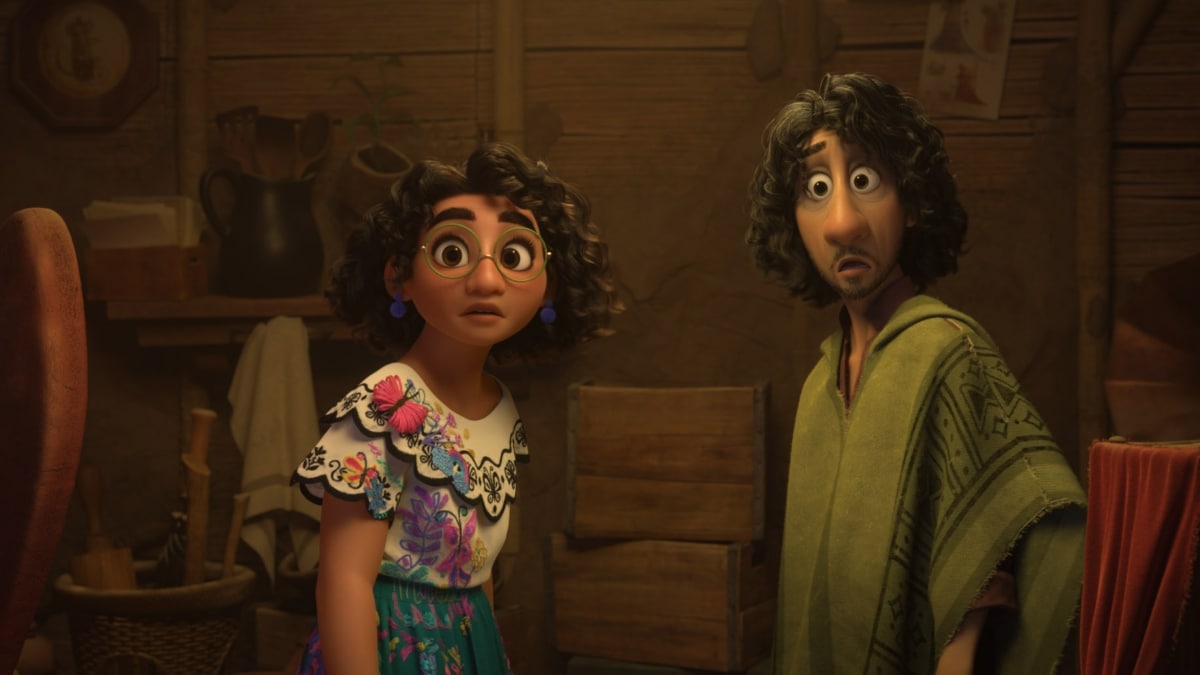
Bruno is an important figure because he represents so many ostracized family members in real life. Particularly in non-Western cultures, family members who break cultural or familial norms are often iced out. Families will act as though they don’t even exist. Lots of Latine families have their own Bruno. It’s a heartbreaking reality, which is what makes this movie hit so close to home for so many of us. Except, where in the end of the movie Bruno is accepted back into the family and Mirabel is appreciated, this often doesn’t happen in real life.
Bruno and his family are the victims of Abuela Alma’s trauma. Alma lost her home and community, so she had to build it back up again with the miracle she received. She felt she needed to serve her community the best she could and create a family so perfect it would erase her sad past, so she has forced her family into perfection. Bruno’s gift was not appreciated by the community, so Abuela Alma could not appreciate her son. Alma came to see all of her family only for the things they could do, not for who they are. This is why she treats Mirabel so poorly.
Luckily, the destruction of the miracle forces Abuela Alma to realize what she has taken for granted: her own family. This leads us to the most compelling, heartbreaking scene in the whole film: when Alma loses her home and her husband. This scene brought tears to my eyes. It depicts Alma, her husband Pedro, and their community losing their home to violence. This is probably a reference to “desplazamientos forzados” (forced displacement). This violence has been ongoing in Colombia for over five decades and goes by many names. Illegal armed groups like guerillas, political dissidents, and gangs force communities to flee. Those most affected are Indigenous and Afro-Colombian communities.
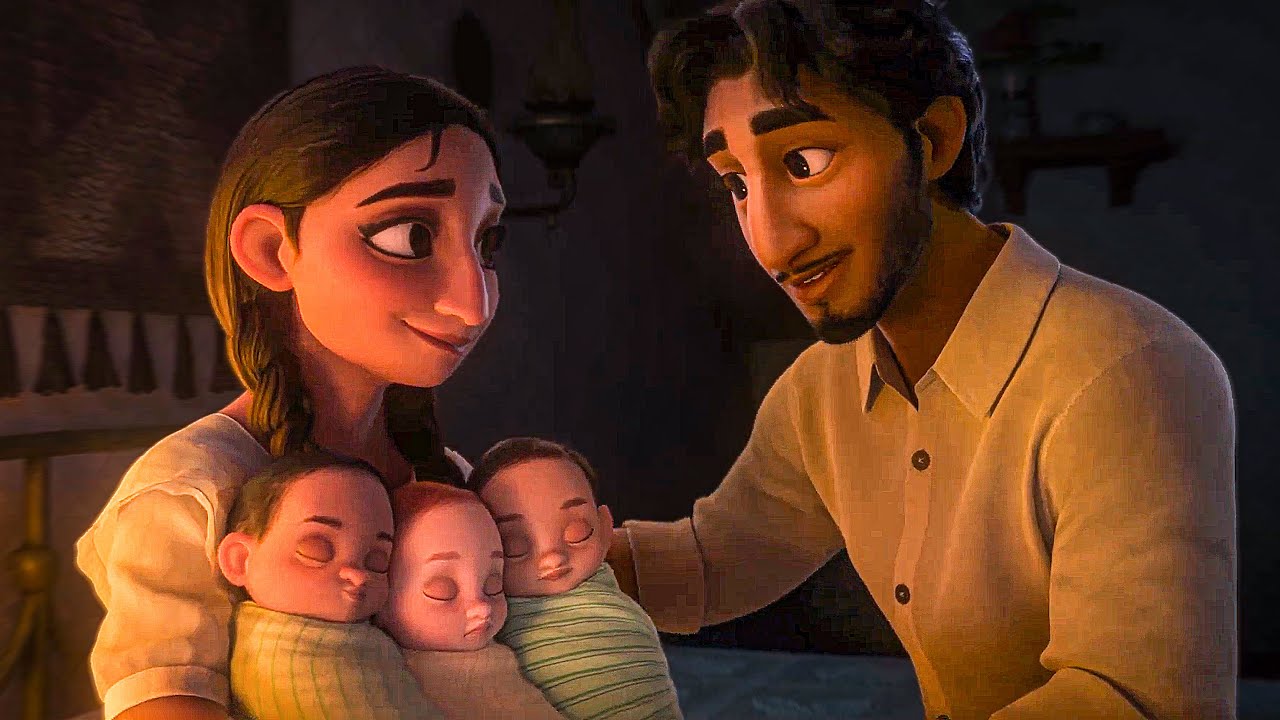
The animation for the sequence is gorgeous: Alma’s explosion of grief when her husband is murdered is an absolute gut-punch, her expressions so real I forgot for a moment I was watching an animated character. The song “Dos Oruguitas” (Two Caterpillars) by Sebastián Yatra plays during the entire sequence, a bittersweet melody. The music swells when Alma’s husband is killed, coinciding with the birth of the miracle in a deeply beautiful, deeply tragic climax.
Following this sequence, Abuela Alma realizes the miracle was not the powers given to her family; it was the life given to them. She realizes the way she’s hurt her family and embraces Mirabel and Bruno. The cycle of victimization is broken. It makes me wonder how much Alma missed Bruno after he disappeared. I wished we had seen more of her grief over that loss.
After they rebuild the home, the Madrigal family’s magical gifts are returned to them. I felt this was a bit of a step backwards. The message about being yourself and breaking a cycle of intergenerational trauma might have been stronger had the family permanently lost their powers and learned to live normally like the other villagers. I also wonder about Mirabel’s status in the family now that she is the only one without a gift again. Will she return to being the odd one out? I hope not.
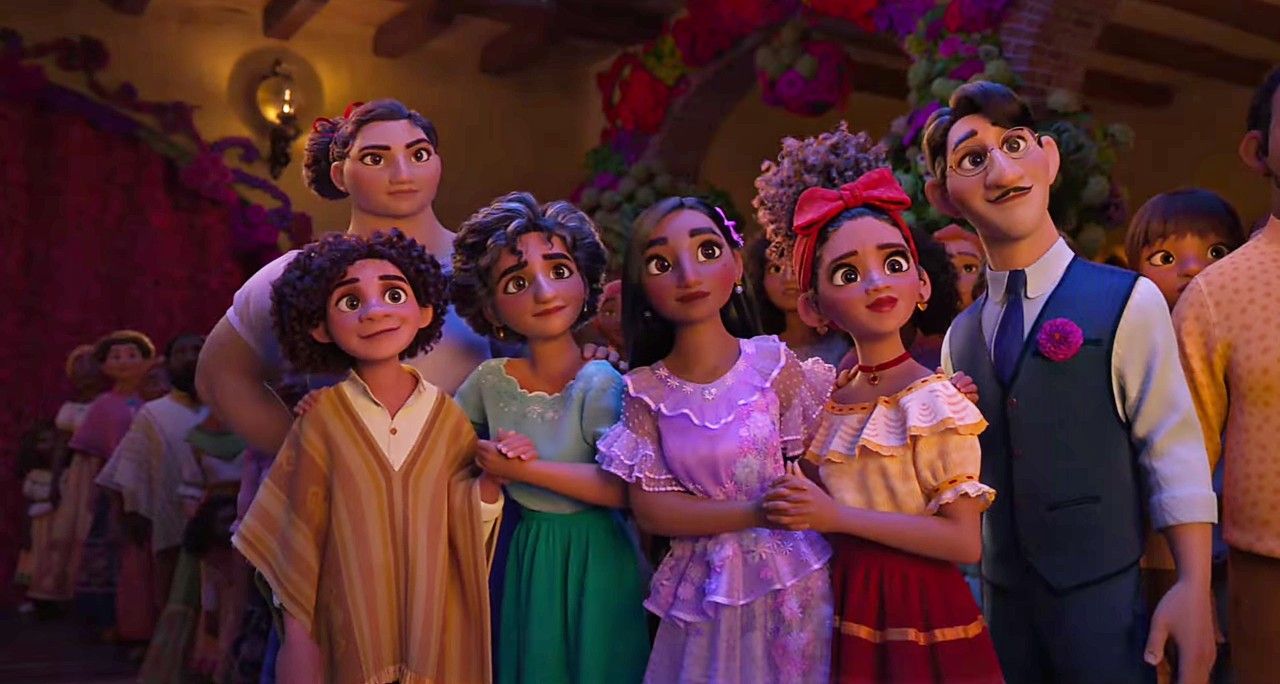
The film does a fine job of balancing its large cast of characters, but with each taste we get of them, I wanted more. Camilo (Rhenzy Feliz) is a fan-favorite on social media. His verses in “We Don’t Talk About Bruno” are amazing, and I want more of him! Camilo and Dolores (Adassa) should’ve gotten their own songs. R&B singer Adassa voices Dolores and her short verses in each ensemble song are beautiful. I was surprised she didn’t get her own song—the character totally deserves one and Adassa’s voice needs to be taken advantage of! I want to know more about Dolores’ struggle longing for a man she couldn’t have according to prophecy. That sounds like a great plot for a Disney+ show or short.
As for Isabela and Luisa, while they get their own songs, it feels as though those are their only moments to shine. They fade to the background once their songs are over. I would’ve liked to spend more time with Luisa and learn how she was burdened specifically. I also wanted to know more about Isabela. How else has her family forced her to be perfect besides her marriage? And how did that arrangement come about in the first place? Also, why does she hate Mirabel so much? I feel some of these problems could’ve been solved with some quick flashbacks to their childhoods.
Overall, I adored Encanto. I hope others love it, too. This is fantastic representation for Latines, specifically Colombians. The little touches of Colombian culture throughout—like the snapping to celebrate, use of “Miercoles” as a curse, the historical references, etc.—were subtle but ensured the authenticity of this film. It felt like a love letter to Colombia. I’m so happy Disney made this film, and I look forward to seeing more films like it.
Encanto is in theaters now.